Heavy mentality of "worshiping degrees"
Ms. Pham Thi Nguyet Minh - Officer in charge of the Training Department, Hanoi Construction College said that up to now, the school has enrolled 60% of the target for the 2025 - 2026 school year.
The State has had many policies to encourage the development of vocational education (VET) through scholarships and support for training costs for secondary school graduates to study at intermediate level. Despite many challenges, in recent years, parents and students have had many changes in their perception of vocational training.
Secondary school graduates can study both vocational and cultural studies, shortening the training time and saving costs, suitable for the economic conditions of many families. The GDTX cultural study program (dual degree system) reduces the workload and is suitable for students who decide to study a trade. The school has links with universities and colleges to create opportunities for transfer to improve qualifications...
However, many parents and students have the mentality of "preferring university degrees" and consider vocational training as the last choice, so the enrollment rate has not reached the set plan. In addition, the work of streaming and career guidance is not effective. Students after secondary school do not have enough capacity to distinguish their favorite or suitable career. Career counseling only focuses on students with weak academic performance.
Sharing the above viewpoint, Mr. Nguyen Phong Tan - Vice Principal of Hanoi College of Industry and Trade said that the school has recruited nearly 70% of the target and is continuing to recruit more according to the plan for the 2025 - 2026 school year. The school is equipped with a fairly synchronous and modern system of facilities and practice rooms to serve the teaching and learning needs of students of all training majors.
This year, the school is assigned to enroll about 40 students for the Semiconductor major; the training program, lecturers as well as practical equipment will be implemented by the school in coordination with the Faculty of Electronics, School of Electricity - Electronics of Hanoi University of Science and Technology. Equipping training facilities for this major will cost about 10 billion VND and will be carried out in specific stages with a clear roadmap.
From the unit's practice, Mr. Nguyen Thai Viet - Director of the Admissions and Job Introduction Center, Phu Tho College of Electromechanics said that the school has only recruited more than 60% of this year's target. Like previous years, the school often has to wait for universities to finish recruiting before continuing to recruit.
“Every year, we promote recruitment and career counseling activities at high schools so that students can see the value of vocational training, and that university is not the only path to success. However, while waiting for university admission results, many students take advantage of working until they are called to vocational training, but they do not want to go to school, so recruitment becomes even more difficult,” said Mr. Nguyen Thai Viet.

Need long-term solutions
Up to now, FPT PolySchool College has completed the enrollment work. Mr. Bui Quang Hung - CEO of FPT PolySchool College informed that before the entrance exam for the 10th grade of the 2025 - 2026 school year took place, about 56% of students came to register to study at the school compared to the target. Before the benchmark score was released, about 22% of students continued to come to submit their enrollment applications.
After graduating from junior high school, students will be required to study 4 compulsory cultural subjects including: Math, Literature, History, Physics. The 3-year training program is equivalent to 9 semesters; in which, after the first 6 semesters, students will be awarded a secondary school diploma and a certificate of sufficient high school cultural knowledge; continuing to study for 1 year (3 more semesters), students will have a regular college degree and will be supported with job referrals or choose to study at higher levels.
“FPT PolySchool’s training model is based on the training method through real projects, helping students accumulate practical experience, thereby meeting the needs of businesses in the current period. The school’s training program is constantly updated according to the curriculum of major publishers in the world to ensure that students’ knowledge is always close to the development reality of that industry in the world,” said Mr. Bui Quang Hung.
To remove the "bottleneck" in vocational education enrollment at this stage, Ms. Pham Thi Nguyet Minh - Officer in charge of the Training Department, Hanoi Construction College emphasized that the school will continue to maintain and expand relationships with businesses, support students after graduation, find jobs, and survey feedback information about workers to have a basis for building and adjusting training programs.
“At the same time, research and develop mechanisms to mobilize staff, teachers, businesses, and other subjects to actively participate in enrollment activities. Regularly survey the opinions and wishes of students and businesses to have a basis for opening short-term training courses, and adjusting and updating the program,” Ms. Nguyet Minh said.
From an expert's perspective, Associate Professor Lam Van Quan - Chairman of the Ho Chi Minh City Vocational Education Association said that in Germany, Australia, Japan, Korea or Singapore... people also have a mentality of valuing universities. But thanks to the national human resource strategy and strong regulatory policies, they have a reasonable allocation between universities - colleges - intermediate schools, and at the same time put vocational education in the overall lifelong learning system.
Workers can go back to school, take additional courses, and upgrade their skills many times in their lives. In Vietnam, the biggest obstacle is the mentality of “university at all costs”. When society is not familiar with the concept of “continuous learning, learning to work - working to learn”, the career path of many young people is limited to a single choice.
According to the expert, vocational education must go hand in hand and be equal to universities, and be part of the lifelong learning system. The State must regulate with financial tools (tuition, scholarships), employment policies, connect schools and businesses and open the way for learners to return to regular study and transfer easily. The labor market data system must be updated and transparent to guide learning and retraining.
“Vocational education is not just initial training, but must become part of the lifelong learning and continuing education system. Workers can learn - do - relearn throughout their career journey. Only then will we have a truly flexible human resource that can adapt to digital transformation, green economy and international integration,” Associate Professor Lam Van Quan further emphasized.
Source: https://giaoducthoidai.vn/xoay-xo-bo-sung-tuyen-sinh-truong-nghe-post750916.html





![[Photo] Students of Binh Minh Primary School enjoy the full moon festival, receiving the joys of childhood](https://vphoto.vietnam.vn/thumb/1200x675/vietnam/resource/IMAGE/2025/10/3/8cf8abef22fe4471be400a818912cb85)
![[Infographic] Notable numbers after 3 months of "reorganizing the country"](https://vphoto.vietnam.vn/thumb/1200x675/vietnam/resource/IMAGE/2025/10/4/ce8bb72c722348e09e942d04f0dd9729)




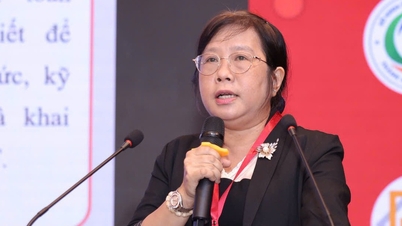









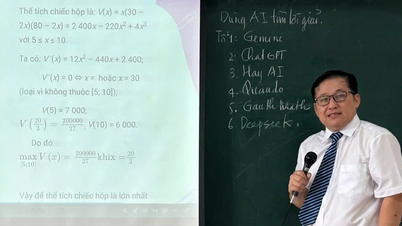








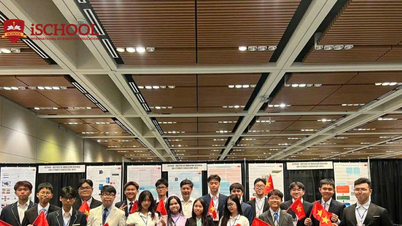
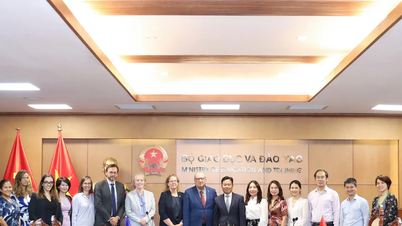
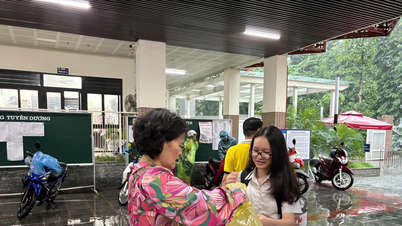

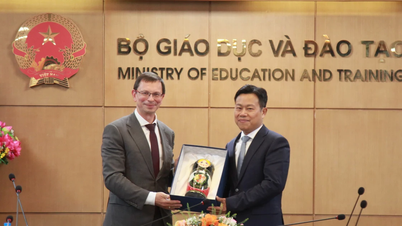


![[Photo] Prime Minister Pham Minh Chinh chairs meeting to deploy overcoming consequences of storm No. 10](https://vphoto.vietnam.vn/thumb/1200x675/vietnam/resource/IMAGE/2025/10/3/544f420dcc844463898fcbef46247d16)






































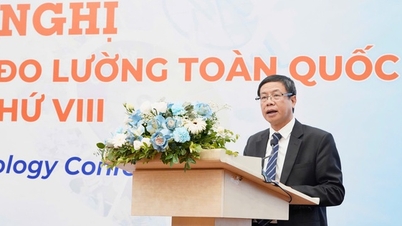






























Comment (0)